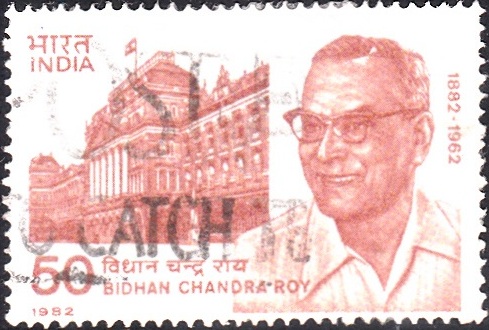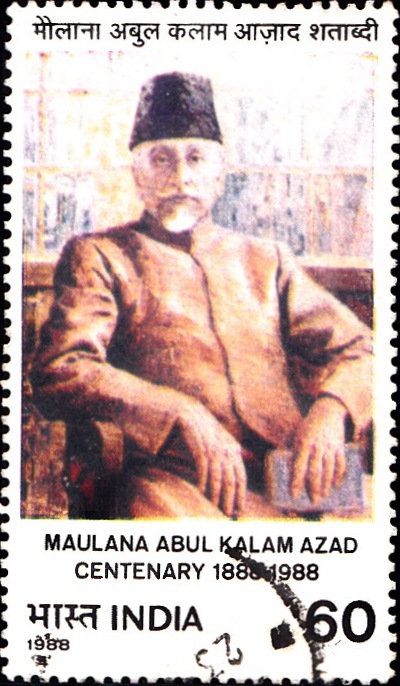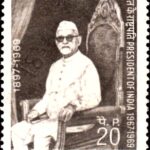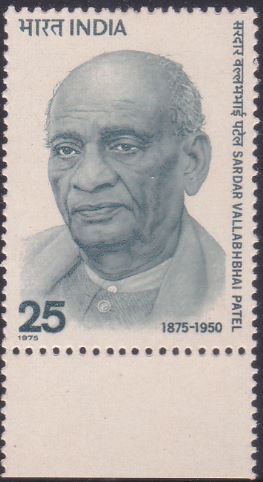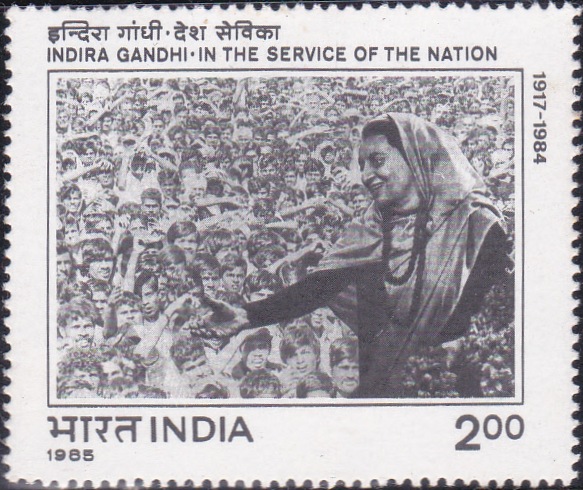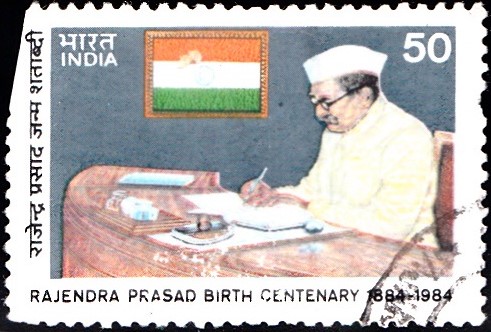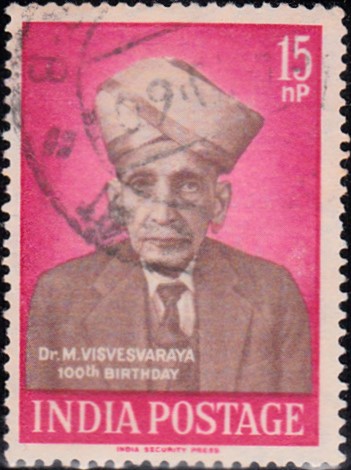
Dr. M. Visvesvaraya
A commemorative postage stamp on the 100th birthday of Sir Mokshagondam Visweswarayya (MV), an Indian civil engineer, 19th Diwan of the Mysore Kingdom :
 Issued by India
Issued by India
Issued on Sep 15, 1960
Issued for : A life so devoted to outstanding achievements would constitute a memorable record even at an earlier age but a hundred years of that life are not only worthy of commemoration but also deserving of a place of distinction in the golden lettered records of history. The P&T Department is proud of being associated with the commemoration of his centenary and the stamp which it has the privilege of issuing on this occasion is but a humble tribute from a body of grateful citizens.
Type : Stamp, Postal Used
Colour : Dark brown & Crimson
Denomination : 15 naye paise
Name : Mokshagundam Viswesvarayya
Born on Sep 15, 1861 at Muddenahalli, Chikkaballapura, Kingdom of Mysore [now in Karnataka]
Died on Apr 12, 1962 at Bangalore, Karnataka, India
About :
- A hundred years in the life of a nation is an age; in the life of an individual it is a marvel but if that life happens to be one of signal achievements in diverse fields of human activity, it constitutes a miracle. Sri M. Visvesvaraya who completes his hundred years in September 1961 can look back upon his century not only with a sense of pride and glory but also as an outstanding contribution to the building up of the Country during a very difficult period of its history.
- Born in a small village in Chickballapur, Taluk of Kolar District, Mysore on September 15, 1861, in a poor Brahmin family, Sri Visvesvaraya became the architect of his own destiny. After completing his education in Engineering with great distinction in 1884, from Poona College, he became an Asstt. Engineer in the P.W.D. of the Bombay Government. Within 3 years he was admitted to the Associate Membership of the Institute of Civil Engineers, London, and very soon he began to take long strides in his chosen profession. In 1894, he was deputed for designing and executing Water works and preparing a drainage and sewerage scheme for the town of Sukkur in Sind. The Governor of Bombay, Lord Sandhurst, described him as the “most able Engineer” the Municipality could provide itself with. Not only in field work but even in research he made his mark and held his position with conspicuousness amongst the best Engineers in the Country and abroad. He travelled extensively and received homage of his professional colleagues wherever he went. His subsequent career was noted for the designing of a new type of waste weir flood gate which was installed at the headwork of Mutha and also a new scheme of irrigation called the “Block system of irrigation” to meet the peculiar problems of the Deccan. By this time his reputation had travelled abroad and Lord Morley, the then Secretary of State for India selected him in 1908 to prepare proposals for a drainage system in Aden. In May of the same year, he retired from the service of the Bombay Govt. at his own request.
- For him however retirement did not mean any cessation of activities; instead it increased the tempo of demands for his services and shortly after retirement and a world tour which he undertook, he was appointed as Special Consulting Engineer to the Government of Hyderabad; Hyderabad City had been seriously affected by the ravages of the Musi river. In 6 months he worked out a complete scheme for protection of the Hyderabad City and was then invited by the Maharaja of Mysore to be his Chief Engineer. Public work was however a passion of his life and acknowledging this, Dewan T. Anand Rao persuaded him that he would have ample opportunities for public service in his new assignment. His service in Mysore State afforded him full opportunities for the exercise of his genius. He designed and constructed a major part of the masonry dam across the Kaveri forming the reservoir now known as the Krishnarajasagar. Gandhiji felt that this project alone was enough to perpetuate his name and no one who visits that spot of beauty and great utility can help endorsing that tribute. His interests began to widen and at his initiative an Economic Conference was brought into existence in Mysore. He appointed a committee on technical education, organized a mechanical and engineering school at Bangalore and subsequently founded the Chamarajendra Technical Institute at Mysore. A comprehensive Railway Programme and the establishment of a railway construction department next engaged his attention.
- After these achievements it was only fitting that he should rise higher in the hierarchy; he was appointed the Dewan of Mysore State on November 10, 1912. His Dewanship was conspicuous for the manner in which he devoted himself to the task of economic reconstruction of Mysore; he set before himself the mission of eradicating poverty and illiteracy, of training the people to live more active and productive life and of ceaseless efforts to secure the betterment of the common man through deliberate planning. Among the achievements of his administration were the establishment of the Mysore University, the Bank of Mysore, the State Engineering College, the Mysore Sericulture Farm, the Mysore Soap Factory, the Mysore Sandal Wood Oil Factory, the Mysore Paper Factory, the Central Industrial Workshop, the Mysore Government Press, the Mysore Cotton Mills, Power Installation at Shimsa, the Mysore Chamber of Commerce, the Mysore Iron and Steel Works at Bhadravati, a planned economic reconstruction of the districts, an efficient audit system, a scheme of foreign training to officers in Government service, village improvement and the new Mysore Treaty with the British Government. During his regime the representative assembly of Mysore acquired larger powers and the Legislative Council was expanded.
- He retired from the Mysore service on 10-6-1919 and thereafter his services were in great demand by the State Governments and public bodies. He represented the Mysore Government in the Committee of Indian Princes and Ministers during the visit of Mr. Montague to India. In 1922 at the political conference of all the parties in India held in Bombay he was voted to the Chair on the proposal of Mr. Jinnah and Pandit Madan Mohan Malaviya. He presided over various conferences from time to time; they included the South Indian States Peoples Conference, Trivendrum, Indian Science Congress, Lucknow in January 1923 and the Indian Economic Conference held in Bombay in 1924. He was also associated with the New Delhi Capital Enquiry Committee of 1922, Lloyd Barrage in Sukkur in 1929, construction of flood protection works in Orissa in 1938 and the selection of a site for a Railway bridge on the Ganga in Bihar in 1952.
- To a person of his attainments honours came easy and in profusion. He received Degrees from the various Indian Universities and became a fellow or honorary member of the Council of Institution of Civil Engineers, London, the Institution of Engineers, India, Indian Science Congress Association, Calcutta, Institution of Town Planners, India, Council of the Institute of Consulting Engineers, Calcutta and the Indian Institute of Science, Bangalore. In 1955 the supreme state award of “Bharat Ratna” was conferred on him and in 1958 the Asiatic Society of Bengal awarded him the Durga Prasad Khaitan Memorial Gold Medal.
- He is the author of many publications and works, the most important of which are: (1) Reconstructing India (2) Planned Economy for India (3) Memoirs of my Working Life and (4) A brief Memoir of my complete working life.


